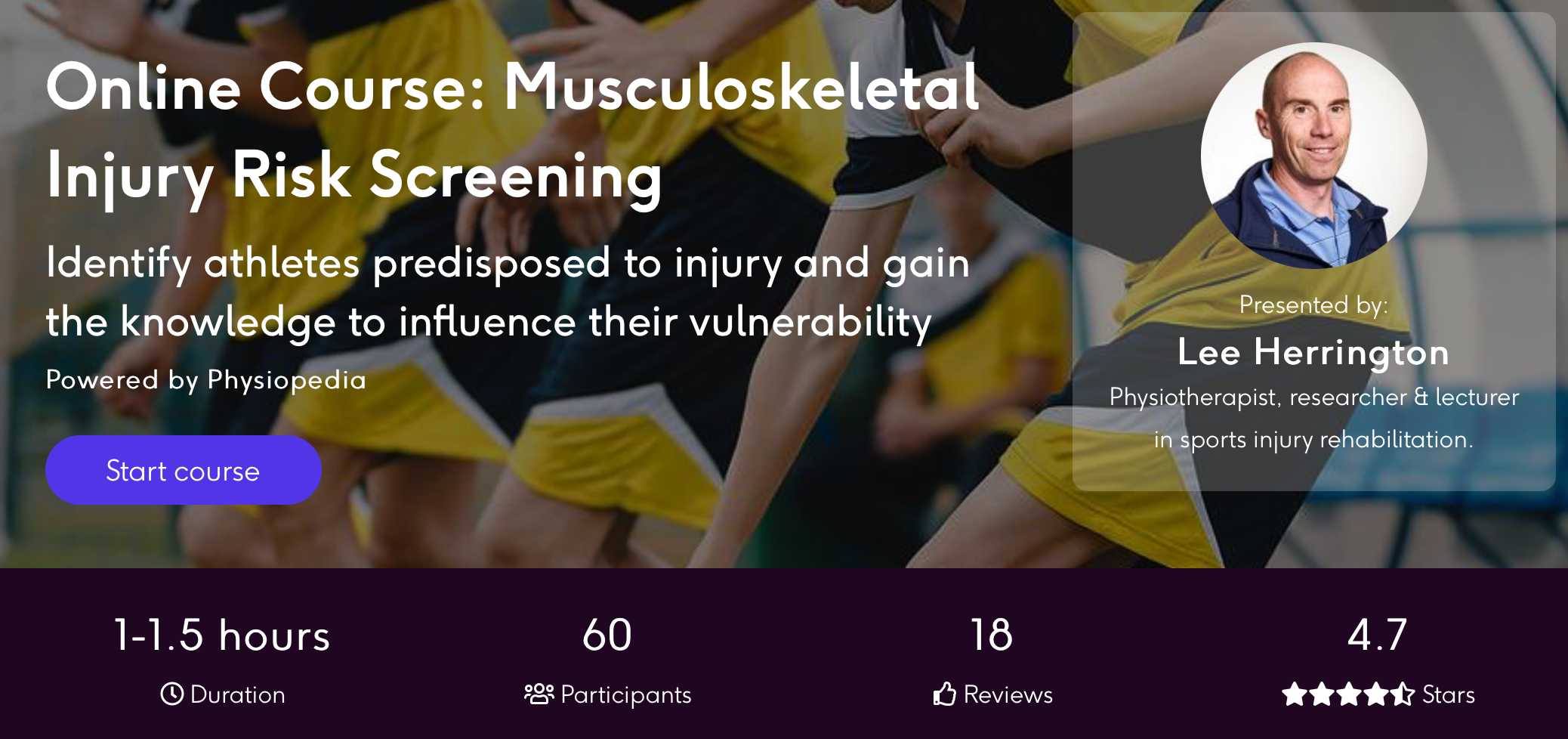Evidence-based prevention strategies are key to reduce the significant burden of sport-related injuries. Regular sports participation is considered a major cause of pain and injury in children and adolescents. It has been shown that participation in a neuromuscular training programme can reduce injury risk compared to a sham intervention in adolescent athletes.
Sports-related injuries have individual, social and financial consequences and the risk of re-injury is high. For example, athletes who return to sport after an ACL injury have a 30 to 40x greater risk of a re-injury compared to uninjured adolescents.
Learn The Art of Identifying Athletes at Risk of Injury
The way in which injury prevention programmes are constructed play an important role in their effectiveness and as suggested by Donaldson et al (2016), these interventions should be evidence-based, widely adopted, and correctly implemented. It should also be sustainable and its effectiveness should be evaluated over time.
One of the main roles of the sports physiotherapist is to ensure that the athlete is in optimal shape to perform, with the minimal risk of developing an injury at the same time. It is often the responsibility of the sports physiotherapist to organise and deliver specific injury prevention programmes in a sports team.
This study aimed to identify the role of sports physiotherapists in the injury prevention process and to compare the structures of preventive programmes applied in athletic organisations and sports teams worldwide. One of which is the FIFA 11+ which we’ve summarised below.
Methods
Sports physiotherapists were invited to participate in an international online survey with questions related to sports injuries prevention processes such as injury registration, preseason assessment, injury prevention programme structure, organisation and implementation.
Physiotherapists registered at a Sports Physical Therapy Association member of the IFSPT who work in athletic organisations or sports teams were invited to take part in the survey.
Results
414 Sports physiotherapists participated in the survey and let’s break the findings out into injury prevention programme organisation and implementation.
Injury prevention programme organisation
Most sports physiotherapists regularly consulted scientific literature to implement injury prevention strategies for the most common injuries. The main factors that sports physiotherapists use to customise injury prevention programmes are:
- Athlete’s injury history (this is consistent with numerous studies that identified injury history as one of the most important risk factors for sustaining a new injury)
- Most common injuries within the sport
- Athlete’s preseason screening results
- Existing sport-specific prevention programme guidelines
51.71% of participants performed tailored prevention strategies, specific for each individual athlete. 20.58% of participants performed tailored prevention strategies with athletes being divided into groups according to their risk profile. 10.0% of participants provided generic injury prevention programmes, not considering athlete-specific baseline screening results.
Most participants (76.33%) indicated collaboration with other professionals when implementing preventive measures. 23.67% of participants reported that they were the only ones responsible for injury prevention in their specific organisation.
Injury prevention programme implementation
Regarding the team’s/athlete’s weekly prevention programme, 28.26% of participants reported that the injury prevention programme (IPP) is an exclusive part of the training session organised by the sports physio. 28.98% reported that the IPP is an exclusive part of the warm-up routine organised by the strength and conditioning coach or the head coach. 23.91% of participants reported mixed injury prevention organisation formats.
More than half (52.17%) of participants indicated that they have difficulties with implementing preventive programmes. The main barriers participants encounter:
- Lack of time within athlete’s routine (66.66%)
- Lack of support from the athletes (42.13%)
- Lack of support from the head coach (38.88%)
- Lack of infrastructure (space and materials) (37.50%)
- Overload of the physiotherapy service (32.40%)
- Lack of support from the manager (16.66%)
- Lack of support from the strength and conditioning coach (14.81%)
- Lack of support from other physiotherapists (12.03%)
- Lack of support from the physician (9.26%)
Conclusion
This was the first international large-scale survey on how sports physiotherapists are involved in injury prevention. One needs to consider though, that the results may be susceptible to reporting bias – each participant completed the questionnaire according to their own beliefs, perceptions and contact with their colleagues and athletes.
Measures most often used to customise preventive measures are athlete’s injury history, most common injuries within the sport and the athlete’s preseason screening results. The most preferred ways to implement the preventive measures were the warm-up or individually guided physiotherapy exercise therapy.
Lack of time within the athlete’s training schedule was reported as the main barrier for injury prevention programme implementation. Most participants felt that their injury preventive measures were effective and evaluated this by comparing current and previous seasons’ injury occurrence.
It is important for sports physiotherapists to be aware of these contextual and behavioural factors when planning and implementing injury prevention programmes and to understand the valuable role they play in making sure that the athlete is in optimal shape to perform at their highest level.
If you want to understand the importance of injury risk screening and how to successfully implement injury preventive measures, then check out these two courses by Dr Lee Herrington.
